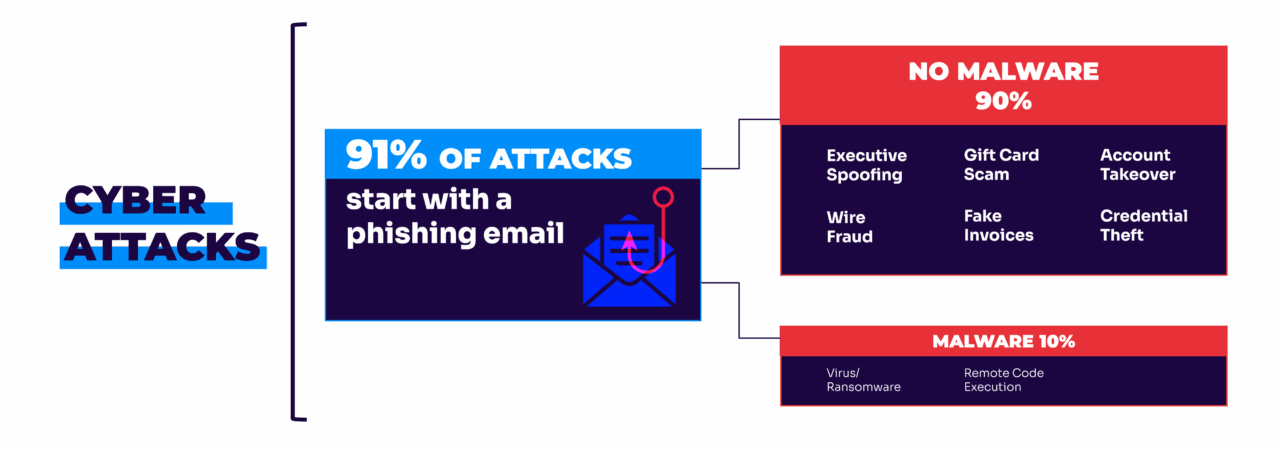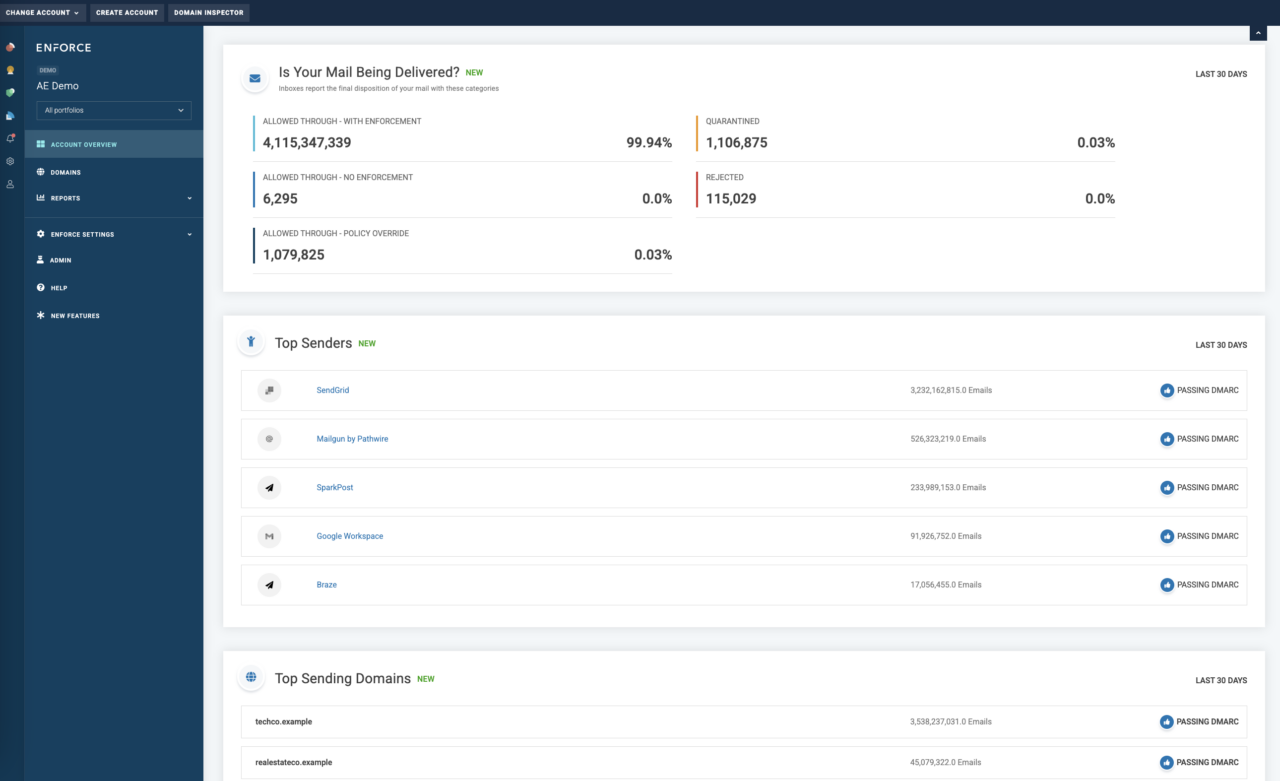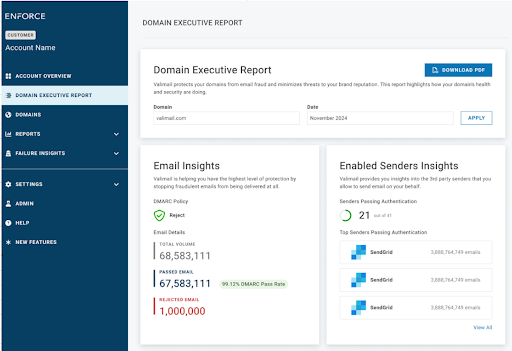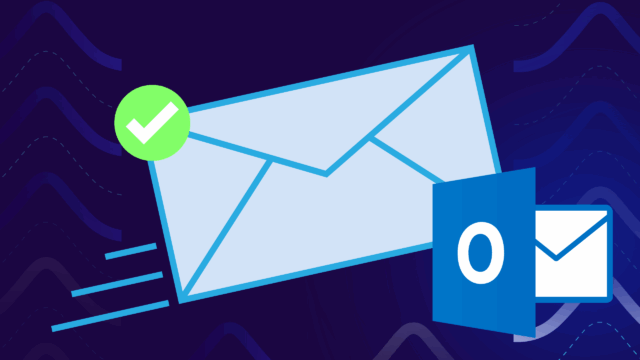Getting budget for an email security tech stack can feel like trying to sell ice to penguins. Your executives might think your current security setup is “good enough,” especially if you haven’t faced a major breach yet. Yet, here’s the thing: waiting for a breach before implementing Domain-based Message Authentication, Reporting, and Conformance (DMARC) is like waiting for a car crash before buying insurance.
It just doesn’t work.
You know what’s happening, though. You’ve seen the phishing attempts slip through. You’ve watched competitors deal with domain spoofing scandals. And you know it’s only a matter of time before someone exploits that gap in your email security.
Fortunately, with the right approach, getting buy-in doesn’t have to feel like pushing a boulder uphill. Whether you’re facing budget constraints, competing priorities, or simple skepticism, this quick how-to guide will help you transform your technical need into a business case that your leadership team can’t (and won’t) ignore.
Let’s skip the fear-mongering and tech jargon. Instead, we’ll focus on practical strategies that speak directly to what your executives care about most:
- Protecting the business
- Maintaining competitive advantage
- Cutting costs
- Managing risk
Let’s turn that “maybe later” into a “let’s do this.”
| Key takeaway: Getting budget for email security isn’t about selling fear; it’s about framing DMARC as a business-critical investment. When you connect email authentication to revenue protection, brand trust, and operational efficiency, leadership starts to listen. DMARC isn’t just a security upgrade. It’s a business case waiting to be made, and Valimail makes it easy to prove ROI, fast. |
Building your business case
The best business case isn’t built on fear or technical specifications. It’s built on real numbers, tangible risks, and clear business opportunities. Here’s how to build an argument that resonates with decision makers.
Data is your friend here. So, let’s use it.

Remember when a single compromised email cost Maersk shipping $300 million in damage control? Or when the average cost of a data breach hit $4.88 million in 2024? These aren’t just big numbers—they’re wake-up calls. More importantly, they’re the kind of figures that make executives sit up and pay attention.
Your current email security might catch 99% of threats (but without DMARC, it’s probably a lot less than that). Sounds impressive, right? But when your company sends 100,000 emails monthly, that 1% means 1,000 potential security gaps. Each one is an opportunity for someone to impersonate your domain and:
- Redirect customer payments to fraudulent accounts
- Damage partnerships with fake communications
- Erode customer trust with convincing scams
The hidden costs you’re already paying
Without DMARC enforcement, your teams are probably spending more time and resources than you realize:
- Your security team is manually investigating suspicious emails that DMARC could have automatically blocked.
- Your IT help desk is fielding calls about legitimate emails landing in spam because you lack proper authentication.
- Your marketing team is struggling with email deliverability issues, potentially missing out on revenue opportunities.
Major companies are starting to require DMARC from their vendors and partners. Microsoft, Google, and Yahoo already do, alongside government institutions. This isn’t just about security anymore—now, it’s about staying competitive in your market.
Think about it this way: When a potential customer is choosing between two vendors, and one has DMARC enforcement while the other doesn’t, which one looks more trustworthy?
Yep. You guessed it.
While DMARC isn’t legally required everywhere (yet), the landscape is shifting:
- The U.S. government requires it for all federal agencies
- The financial sector is rapidly adopting it as a standard
- Google, Yahoo, and Microsoft require it
Plus, implementing DMARC isn’t just about preventing bad things from happening. It’s about enabling good things:
- Higher email deliverability rates for marketing campaigns
- Increased trust from customers and partners
- Better visibility into your email ecosystem
- Simplified compliance with emerging security standards
- Access to BIMI
There are the facts, but now it’s time to look for examples within your own organization:
- Pull reports showing attempted domain spoofing
- Calculate time spent on manual email security tasks
- Document instances of legitimate emails going to spam
- List partners who’ve asked about your email authentication status
Remember, you’re not just asking for a security tool. You’re proposing a business solution that protects revenue, improves efficiency, and positions your company for future success.
Want to know how exposed your domain is right now? You don’t need to guess. Valimail offers a free domain checker that evaluates your current authentication status across SPF (Sender Policy Framework) and DMARC (Domain-based Message Authentication, Reporting, and Conformance). But we go further than just showing a pass/fail. We show you vulnerabilities and allow you to download your domain’s report to share with your executive team.
Check your
domain now
Enter your domain to see if it’s vulnerable to spoofing or if others are sending emails on your behalf. Instantly check your DMARC, SPF, and BIMI status with a detailed security report.
You’re not fully protected, learn more here.
Check your
domain now
Enter your domain to see if it’s vulnerable to spoofing or if others are sending emails on your behalf. Instantly check your DMARC, SPF, and BIMI status with a detailed security report.
You’re not fully protected, learn more here.
Check your
domain now
Enter your domain to see if it’s vulnerable to spoofing or if others are sending emails on your behalf. Instantly check your DMARC, SPF, and BIMI status with a detailed security report.
You’re not fully protected, learn more here.
Your Domain
Not protected AGAINST IMPERSONATION ATTACKS
DMARC NOT AT ENFORCEMENT
exampledomain1.com
Authentication Status for January 10, 2025
DMARC at Enforcement
SPF Record Configured
BIMI Ready
exampledomain1.com
Authentication Status for January 10, 2025
DMARC at Enforcement
SPF Record Configured
BIMI Ready
How DMARC relates to business goals
When executives hear “DMARC,” they might think it’s just another security protocol. But when you connect it to core business objectives, suddenly it becomes a lot more interesting.
Here’s how DMARC directly impacts your business goals.
Your sales team’s emails actually reach their prospects instead of landing in spam. When your domain has a solid sending reputation, those carefully written sales pitches don’t get lost in junk folders.
Your payment processes stay secure. No more worrying about fake invoices or payment redirect scams that could cost you real money. One spoofed invoice can lead to hundreds of thousands in losses—just ask Google and Facebook, who lost $100 million to a single fake invoice scheme.
Your customers get emails from you (and only you). No more confused calls about “weird emails” they received from your domain. Their trust in your brand stays intact because they know every email from you is legitimate.
Prevent brand damage before it happens. Stop scammers from impersonating your executives or sending fake offers in your name.
Build trust with partners and vendors. When they see you take email security seriously, it reinforces your reputation as a reliable business partner.
When presenting these connections to leadership, use examples from your own business. Look for places where email authentication issues have already impacted these goals, even if in small ways. The more you can tie DMARC to existing business challenges and objectives, the stronger your case becomes.
Numbers talk: The ROI breakdown
Okay, we know what your executives really care about: the numbers. We’ll break down the costs, savings, and return on investment in terms that make sense to your finance team.
The cost of doing nothing
First, let’s look at what you’re risking by not implementing DMARC:
- Average cost of a business email compromise attack: $129,000
- Brand reputation damage: 66% of customers say they’d stop doing business with a company after a data breach
- Lost revenue from poor email deliverability: 15-25% of legitimate marketing emails never reach the inbox
- IT team time spent investigating email issues: 2-3 hours per day
So, that’s what you’re already up against.
The implementation investment
Implementation isn’t free. It’s an investment. Here’s what you’re actually looking at for DMARC implementation:
- Initial setup and monitoring: Typically 2-3 months
- Staff training and adjustment period: About 10-15 hours total
- Ongoing maintenance: 2-4 hours monthly for monitoring and adjustments
- Solution costs: Usually a fraction of what you’re spending on your current security stack
“Outcomes show that implementing DMARC is one of the highest ROI solutions available. Just make sure to insist on enforcement (activation) and that the process is automated – otherwise, DMARC can be daunting.”
Alexander García-Tobar, CEO, Valimail
The payoff timeline
Now, when will you start seeing a return on this investment? Good question. DMARC isn’t a long-term waiting game. You’ll see results quickly. Here’s what you can typically expect:
Month 1:
- Complete visibility into your email ecosystem
- Identification of all sending sources
- Early detection of unauthorized senders
Month 3:
- 90-100% of legitimate email properly authenticated
- Reduction in help desk tickets about email issues
- Improved email deliverability rates
Month 6:
- Full enforcement in place
- Elimination of domain spoofing attempts
- Measurable increase in email marketing ROI
All of this leads to better deliverability, improved inbox engagement, higher conversion rates, lower insurance premiums, less time spent on email-related help desk tickets, and fewer cyberthreats. Oh, and then there’s the less-obvious benefits, too:
- Less time spent on manual email authentication
- Fewer false positives to investigate
- Reduced back-and-forth with partners about email legitimacy
- Lower likelihood of regulatory fines
- Decreased chance of reputation damage
- Reduced risk of losing business to security-conscious competitors
Make the numbers work for you
Now, unless you make these numbers relatable to your company, they really don’t mean much. Next, customize these numbers for your organization:
- Calculate your current costs:
- Hours spent on email security issues
- Lost revenue from poor email deliverability
- Risk exposure based on your industry
- Project your savings:
- Reduced labor costs
- Improved marketing performance
- Risk mitigation value
- Compare against implementation costs:
- Solution pricing
- Implementation resources
- Ongoing maintenance
Creating your pitch
Your data is solid. Your ROI calculations are ready. Now it’s time to package everything into a pitch that turns heads and opens wallets. Here’s how to structure your presentation for maximum impact.
Start with a story, not stats.
Open with a recent incident that hits close to home:
- A competitor who just got spoofed
- A partner who had their domain compromised
- A concerning phishing attempt that almost worked
Make it real and relevant to your industry. For example: “Last month, our competitor had their domain spoofed to send invoices to their entire customer base. Their stock dropped 5% that day.”
Boom. Mic drop.
Next, it’s time to modify your pitch for your audience. Think about who you’re talking to.
Different executives, different priorities:
CFO:
- Focus on cost avoidance and ROI
- Highlight reduced risk of financial fraud
- Show clear implementation and maintenance costs
CIO/CISO:
- Emphasize integration with existing security stack
- Address technical resource requirements
- Show compliance benefits
CEO:
- Connect DMARC to business growth
- Focus on competitive advantage
- Highlight brand protection
Here’s how to structure your presentation to keep everything short and sweet and to the point:
- The hook (2 minutes):
- Start with your story
- Share one compelling statistic
- State the opportunity clearly
- Current state (3 minutes):
- Show your email security gaps
- Present relevant threat data
- Share specific vulnerabilities
- The solution (5 minutes):
- Explain DMARC in business terms
- Show implementation timeline
- Highlight quick wins
- ROI breakdown (5 minutes):
- Present clear cost-benefit analysis
- Show payback period
- Include risk reduction value
- Next steps (2 minutes):
- Outline immediate actions
- Show resource requirements
- Present clear timeline
Recommendation: Have a “quick start” option ready—a smaller initial commitment that gets the ball rolling without requiring the full budget upfront.
Keep in mind that most successful pitches don’t get an immediate yes. Be ready to nurture the conversation over time, providing additional data and addressing new questions as they arise.
Win over your executives with Valimail
Getting executive buy-in for DMARC doesn’t have to feel like climbing a mountain in flip-flops (ouch). You’ve got the data, you understand the business impact, and you know how to present it in a way that resonates with leadership. Now it’s time to take action.
Before you walk into that meeting:
- Run a quick domain health check to understand your current email authentication status
- Gather specific examples of spoofing attempts or delivery issues affecting your company
- Calculate the time your team currently spends managing email security issues
- List out which competitors and partners already have DMARC at enforcement
Remember, timing is everything. Consider scheduling your pitch around:
- Annual budget planning
- Security audit reviews
- Industry compliance deadlines
- Major digital transformation initiatives
What happens if there’s just no budget available?
If your company and team still don’t have the budget for a DMARC solution, don’t worry.
This is where Valimail Monitor comes in. Monitor is a free solution that gives you full visibility into which email services are sending on your behalf—and whether those sources are authenticated properly. You’ll see exactly who’s using your domain (authorized or not), spot misconfigurations, and immediately start quantifying potential risk. No commitment, no guessing.

You don’t have to get a credit card or worry about expiring free trials. Valimail Monitor has always been free and always will be.
All you need to do is create an account and point your DNS to Valimail and instantly get real-time data about your domain senders.
Prove ROI with Valimail Domain Executive Report
If you’re serious about eliminating domain spoofing and building trust across your communications, Valimail Enforce is the answer. As the global leader in zero-trust email authentication, Valimail helps you get to DMARC enforcement faster and easier.
And when you sign up for Enforce, you’ll get your Domain Executive Report for free. You can keep your executives up to date with proof of ROI and progress results with an exportable PDF.

With Valimail’s Domain Executive Report, you’ll receive:
- A downloadable, presentation-ready PDF designed for executive audiences
- A breakdown of misconfigured or unauthorized email senders using your domain
- Visual insights into spoofing attempts and gaps in enforcement
- A snapshot of where your domain is vulnerable—and what that risk actually looks like in business terms
This isn’t just technical validation. It’s evidence.
This kind of tailored report helps turn the abstract concept of “email authentication” into a real, visible security and brand risk—something leadership can immediately understand and prioritize.
Want to learn more or need us to speak to your executive team? Our DMARC experts are ready to help.



